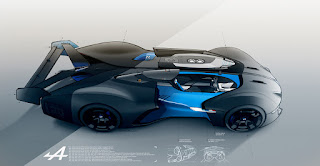Summary Reader Response (Draft # 3)
Toyota
(2023) introduces the 2024
Toyota Mirai, powered by its unique hydrogen fuel-cell engine, distinguishing
itself from market rivals. The Mirai powers itself with a hydrogen fuel-cell stack, unlike
electric vehicles and hybrids that use conventional batteries and a mix of
electric motors and a petrol engine. According to Hunting (2023), the
engine operates by drawing in oxygen through the car’s intake, combining itself
with hydrogen stored in undercarriage tanks inside the car’s “fuel cell stack.”
This mixing process produces only clean water as waste, which makes an emission
count of nought.
There are
some features that the hydrogen fuel-cell engine provides for the vehicle. The
Mirai includes three hydrogen tanks, connected to the engine for extended range,
which according to Leow, (2022), are "so durable that Toyota test
developers shot them with guns, resulting in the tanks surviving instead of the
bullets". Another unique feature of the engine is the Mirai’s Hybrid
Battery Pack. This battery pack, essential to the hydrogen fuel cell engine,
boosts power output for improved acceleration and enables regenerative braking.
With these features, the Mirai comes with some impressive performance
statistics, such as a smoother and quieter ride due to the improvements to the
engine made over the years. The upgraded tank offers a driving range of 645 km.
The lighter engine block provides a higher horsepower output that allows the
Mirai to accelerate to 100km/h effortlessly. Remarkably, Toyota achieved these
improvements with parts costing two-thirds of the previous generation Mirai.
One of the
key reasons that cars like the Mirai can’t be normalised on the road is due to the
process and manufacturing of storage of hydrogen, which is complex and
difficult. According to TWI, (2024), hydrogen itself is difficult to
store due to its low volumetric energy density, being easily lost in the
atmosphere. To add on, hydrogen is extremely flammable, requiring the utmost
safety of those who are handling hydrogen, and complex equipment such as flame
detectors being needed to ensure that there are no hazards when hydrogen is
being stored. To accomplish
this, scaling up decarbonized hydrogen production and fuel cell manufacturing
is essential, alongside the development of regulatory frameworks to support
storage production. Additionally,
technological advancements are needed to reduce costs relating to the storage of hydrogen during transportation, such as
boats or tankers carried by trucks, requiring further infrastructure investment. Thus
Another
huge disadvantage of using engines that run on hydrogen is the high cost, particularly
concerning the construction of hydrogen fuel-cell refuelling stations or pumps,
as well as the expense of refuelling a hydrogen fuel-cell vehicle compared to
other types of vehicles currently on the roads, such as electric vehicles,
petrol, or diesel-fuelled cars. The high cost stems from the complexity of
storing hydrogen compared to other fuels, requiring substantial investment in
research and development for machinery and storage units such as hydrogen fuel
pumps and transportation tanks for trucks. For instance, according to Donut
Media (2021), the average cost of manufacturing a single hydrogen pump is a
staggering US$2 million, whereas a similar electric charging point or fuel pump
costs about US$50 thousand and US$300 thousand respectively. Similarly,
refuelling with hydrogen is notably expensive, estimated at around US$80 to
fill a single tank compared to an average of US$32 for a similar-sized tank of
conventional fuel. These cost challenges significantly hamper the demand for
vehicles utilizing hydrogen fuel cell engines. Statista (2022) reported just 54
hydrogen fuel pumps in the USA and none in Singapore, underscoring the scarcity
of these stations due to the financial burdens on construction companies.
There is a
glimmering hope of the possible use of hydrogen fuel cell engines, and that is
its eco-friendliness and environmental benefit. According to Donut Media
(2021), These engines combust hydrogen and oxygen, causing water to be the only
by-product, instead of harmful pollutants like carbon monoxide from engines
running on petroleum. To further add on, compared to combustion engines,
hydrogen fuel cell engines are designed and manufactured to be much more
efficient than combustion engines, as well as boasting a faster refuelling time
to a full tank.
In summary, hydrogen fuel-cell cars like the Toyota Mirai encounter
obstacles to mainstream adoption, mainly due to complex manufacturing, costly
fuel-cell pumps, and hydrogen storage challenges. Despite environmental
advantages like reduced petroleum usage and minimal waste or emissions, the economic
and manufacturing hurdles of sustaining the use of hydrogen fuel-cell cars
currently outweigh these benefits.
References
Hunting, B. (2023, March
14). Toyota Mirai proves hydrogen is the future - and always will be.
InsideHook.
https://www.insidehook.com/autos/review-2023-toyota-mirai-hydrogen-fuel-future/amp
Ju-Len, L. (2022). Toyota’s
futuristic Mirai is still stuck in the future. The Business Times. https://www.businesstimes.com.sg/lifestyle/toyotas-futuristic-mirai-still-stuck-future
2023 Toyota Mirai. 2023 Mirai.
(n.d.). https://www.toyota.com/mirai/
Donut Media. (2021, April
12). Why hydrogen cars flopped. YouTube.
https://youtu.be/b88v-WvqzeQ?si=Ro8lq2lgpWurBHkp
Statista. (2024, January 26). Number
of hydrogen fuel stations by country in 2022. https://www.statista.com/statistics/1026719/number-of-hydrogen-fuel-stations-by-country/
What are the pros and cons of hydrogen
fuel cells? TWI. (2024). What are the pros and cons of hydrogen fuel cells? https://www.twi-global.com/technical-knowledge/faqs/what-are-the-pros-and-cons-of-hydrogen-fuel-cells



Comments
Post a Comment